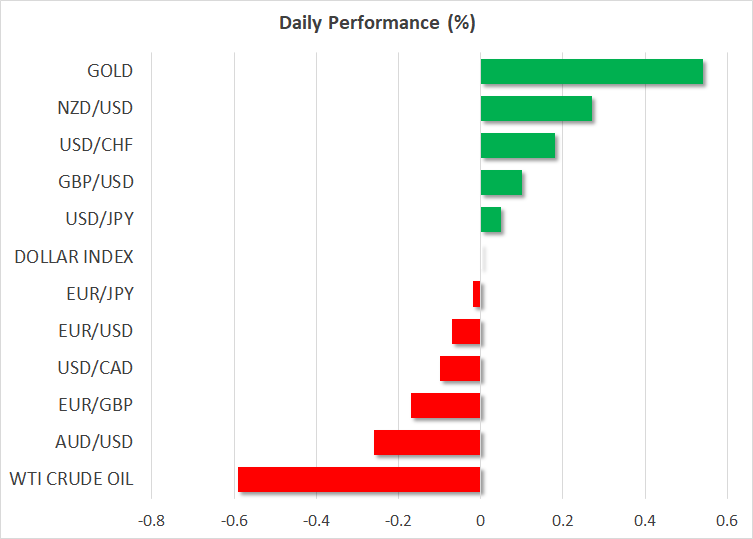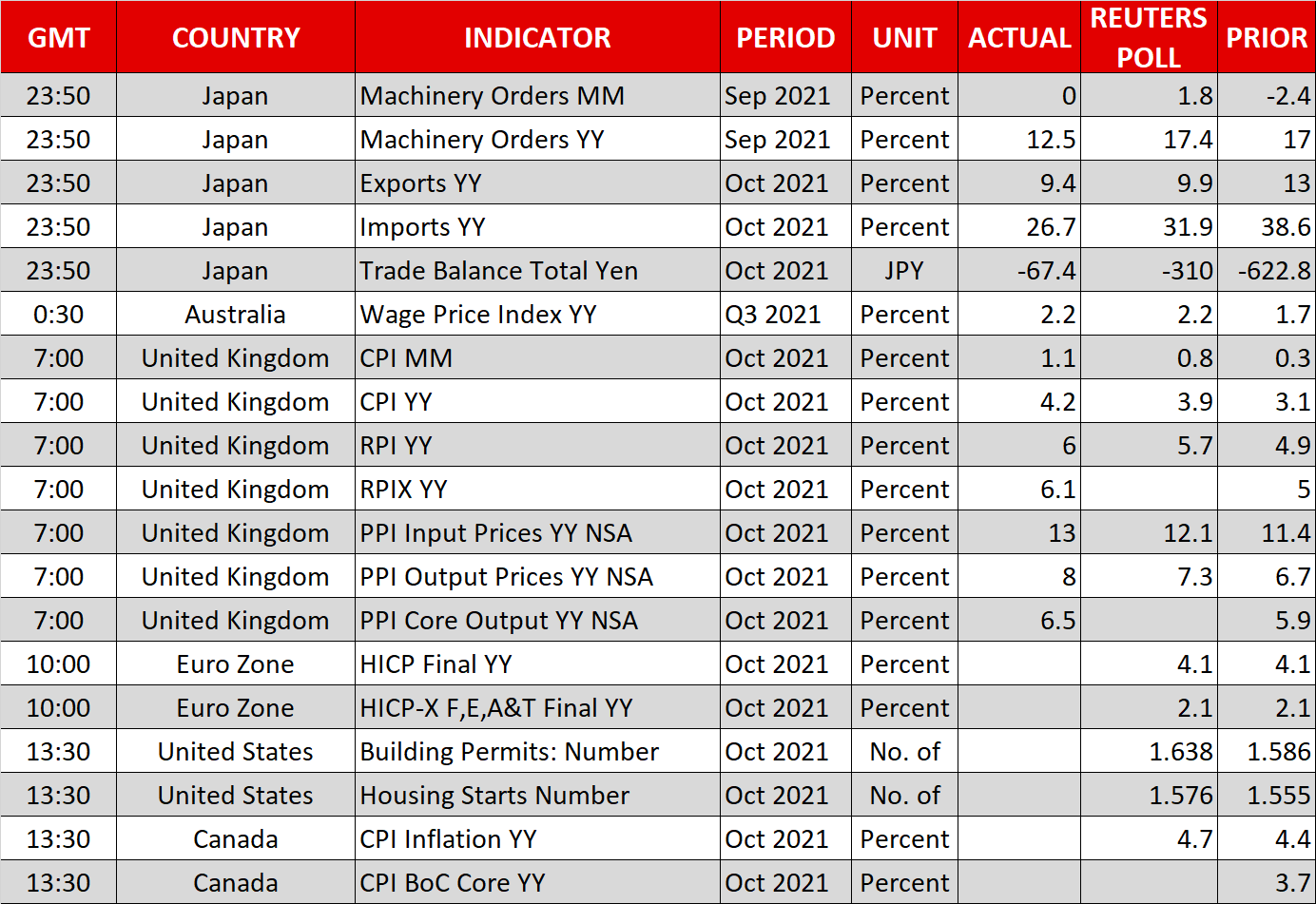- Euro tumbles again as dovish ECB and mounting worries weigh
- Pound modestly higher after UK inflation tops 4%
- Dollar reigns supreme as strong US data run continues

Euro can’t catch a break
The euro is sinking, stretching its week-long slide and breaching the $1.13 level for the first time since July 2020, as investors turn more bearish on the Eurozone outlook. The single currency had already come under heavy selling pressure from last week’s big jump in US inflation, which propelled the dollar higher, but had managed to stabilize before ECB chief Christine Lagarde triggered a fresh wave of selling on Monday.
Lagarde merely repeated what she had communicated on the ECB’s forward guidance on rates at the last policy meeting, but although money markets once again dismissed her remarks, currency traders are having a rethink. Recent economic pointers have generally been much stronger for the United States than for the Eurozone, with inflation also surging at a more alarming rate across the pond than in the euro area.
More worryingly, this comparative underperformance comes even before fresh restrictions have started to kick in across Europe to fight rising Covid infection levels. Austria and the Netherlands recently introduced new measures to contain the latest virus wave, while Germany is also considering tighter curbs.
But there are other headwinds that are causing angst among investors. Natural gas futures in Europe are soaring again amid renewed fears of shortages after Germany suspended the approval of the Nord Stream 2 pipeline that runs under the Baltic Sea to Russia. With oil prices also elevated and winter approaching, Europe’s energy crunch could get much worse, though so far, there’s no sign of Russian supplies being disrupted either due to the German ruling or tensions with Belarus.
The euro was last trading around $1.1315, having earlier brushed an intraday low of $1.1262. Against the pound, the single currency slid to a 21-month trough of 0.8389, while versus the Swiss franc, it fell to an 18-month low of 1.0507.
December rate hike eyed after UK CPI surge
Consumer prices in the UK rose at an annual rate of 4.2% in October, likely unsettling some policymakers at the Bank of England. Analysts had forecast inflation to rise to 3.9%. The stronger-than-expected figures come just a day after the robust employment data that showed the UK labour market managed to more than absorb the furloughed workers that were still on government support when the program ended in September, clearing a major hurdle for the BoE to raise rates.
Many would argue that spiralling inflation and a tight jobs market are classic signs of an economy overheating. Yet, with the spike in inflation being driven mainly by supply-side factors rather than from excess demand, market punters think a premature rate hike would be damaging for the British economy.
However, BoE Governor Andrew Bailey reiterated his ‘unease’ about inflation this week, opening the door to possible action as early as the next meeting in December.
The pound edged higher today, retracing some of yesterday’s pullback to climb to around $1.3430.
Dollar marches on after stellar retail sales report
The US dollar scaled fresh 16-month highs against a basket of currencies on Wednesday, surpassing the 96.0 level, emboldened by yesterday’s impressive retail sales readings, which reinforced the view that US growth is gaining momentum in the fourth quarter.
Treasury yields have also continued to inch up, aided by hawkish remarks by St. Louis Fed President James Bullard, who will become a voting member on the FOMC next year.
More Fed speakers are coming up later today, including governors Waller and Bowman and Chicago Fed President Evans.
In other currencies, the New Zealand dollar was paring some of yesterday’s sharp losses but the aussie slipped further, hitting one-month lows versus the greenback after underwhelming domestic wage growth data. Although Australia’s wage price index picked up to 2.2% in the third quarter, it was not seen to be substantial enough to warrant an earlier rate move by the RBA.
The Canadian dollar was struggling too ahead of CPI data due later today that is expected to show Canada’s inflation rate approaching 5%. The loonie may not enjoy much of a boost if the CPI numbers beat expectations after the Bank of Canada’s deputy governor, Lawrence Schembri, yesterday dampened expectations of a rate hike in the first half of 2022.

